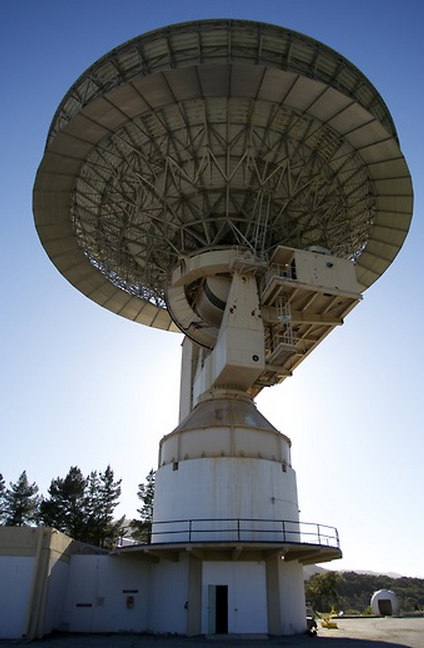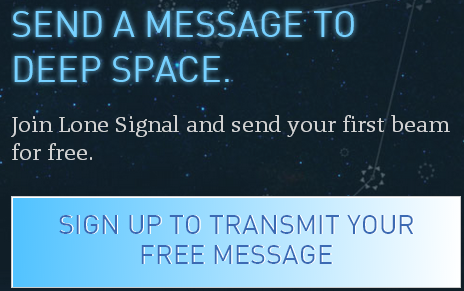First message sent to Gliese 526, 17.6 light-years away
June 18, 2013
 At 9 PM EDT Monday, June 17 at a press event in New York, the Lone Signal team announced the transmission of the first interstellar beam (message).
At 9 PM EDT Monday, June 17 at a press event in New York, the Lone Signal team announced the transmission of the first interstellar beam (message).
It was transmitted from the giant ex-NASA Jamesburg dish in Carmel, California to the Gliese 526 solar system, 17.6 light-years away.
Simultaneously, at the Computer History Museum in Mountain View, California, as he started his welcome talk to the Singularity University class of 2013, Ray Kurzweil read that message, which he had composed:
Greetings to Gliese 526 from Singularity University. As you receive this, our computers have made us smarter, the better to understand you and the wisdom of the universe.
Other “alpha beamers” — including Dan Aykroyd, Alicia Keys, and Jason Silva — also sent beams Monday night. And now anyone can send a “crowdsourced” 144-character beam and pic from here.
Will a robot reply to ET’s return message?
That first message will arrive in the year 2031, just two years after an AI will have rivaled human intelligence by passing the Turing test, according to Kurzweil’s estimate.
Assuming a Gliese 526 resident decodes the binary message (and our language), and then replies soon afterwards, we will receive their return message in 2048, just three years after the Singularity — again, Kurzweil’s estimate.
The Gliese 526 solar system was chosen as Lone Signal’s first target because it’s in the “Goldilocks zone” — a potentially habitable solar system listed in HabCat (The Catalog of Nearby Habitable Systems), which was developed by SETI scientists Jill Tarter and Margaret Turnbull, Chief Science Officer Dr. Jacob Haqq-Misra explained to KurzweilAI. Gliese 526’s relatively close proximity to the Earth and it position in the sky (makes it accessible by the Jamesburg dish) makes it an ideal choice.
Lone Signal plans to also target other stars close to Earth. “Red dwarf stars [like Gliese 526] are the most numerous in the galaxy and also the most long-lived,” said Haqq-Misra. “This makes them extremely attractive targets for exoplanet searches, as well as SETI and METI [Messaging to Extraterrestrial Intelligence].
